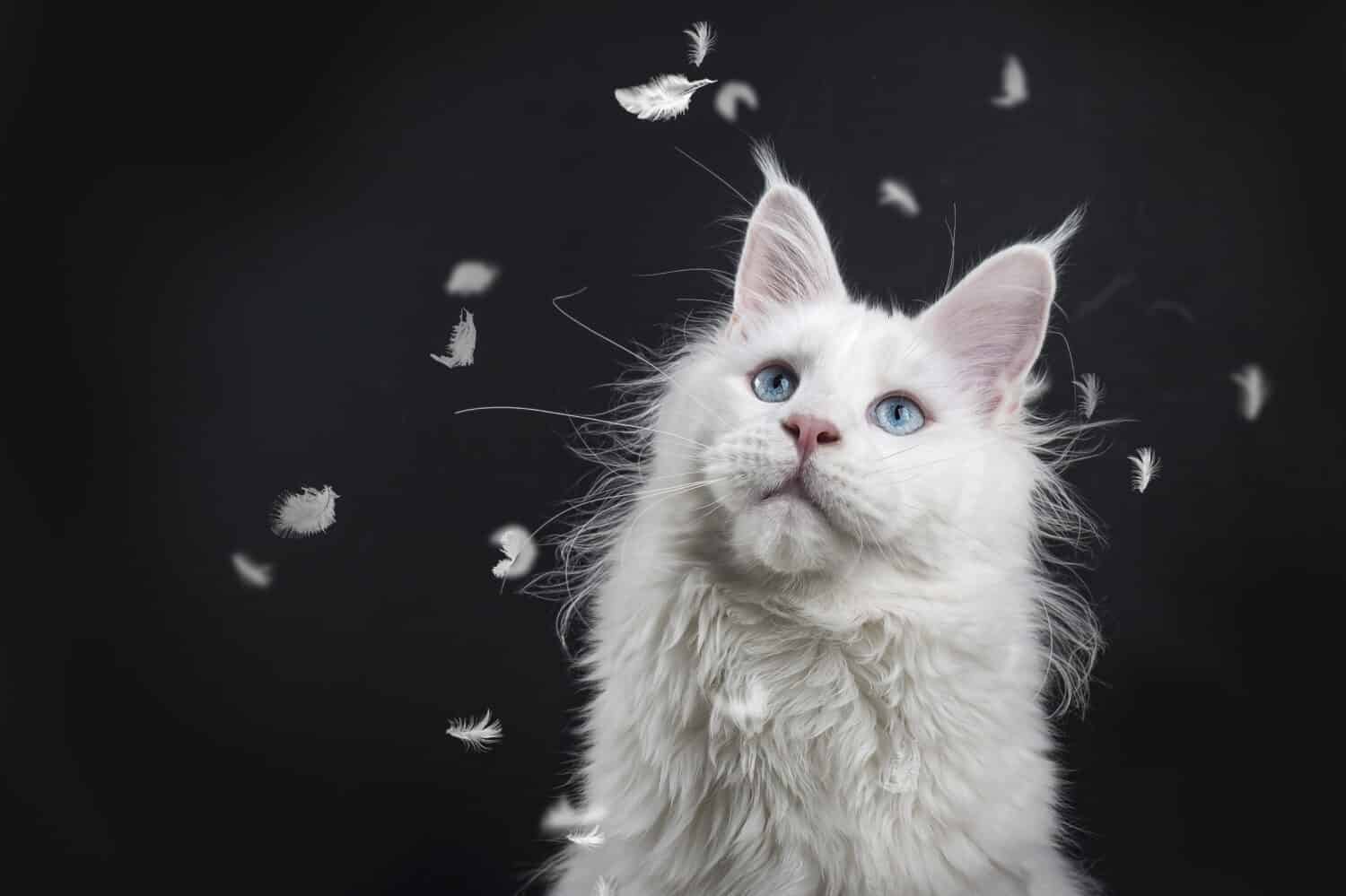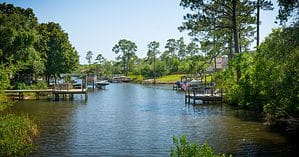Let’s delve into the fascinating origin of Maine‘s nickname, “The Pine Tree State.” Join us as we uncover the rich history and significance behind this iconic moniker that beautifully captures Maine’s abundant natural beauty and forested landscapes.
How the Pine Tree State Got Its Name
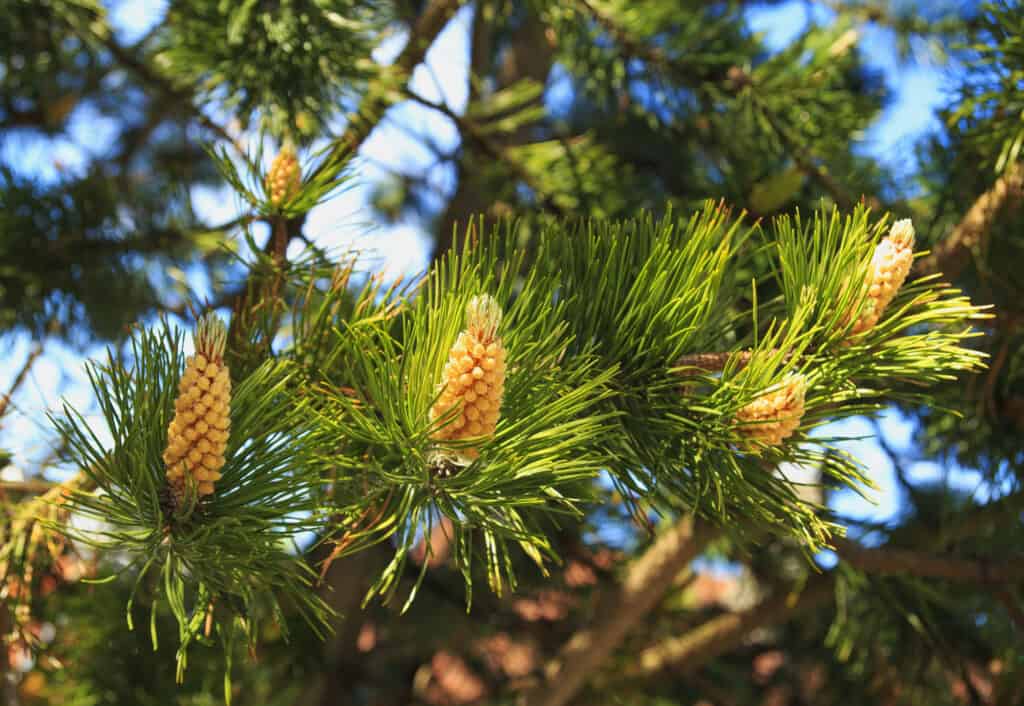
Eastern white pines are the official state tree of Maine and are plentiful in the state.
©Ukrolenochka/Shutterstock.com
For centuries, Eastern white pine has been a significant tree to the people of what is now Maine. Unsurprisingly, the state is referred to as the “Pine Tree State” because of its abundance of pine trees. As a sign of its importance, in 1895, the Maine legislature selected the “Pine Cone and Tassel” as the official floral emblem of Maine. Later, in 1945, the legislature designated the white pine tree as the official tree of the state.
The accessibility and superior quality of white pine lumber have been instrumental in the progress and economy of Maine since 1605 when English captain George Weymouth brought samples back to England. In 1691, there were not enough trees to build masts for ships. So, England implemented a Broad Arrow Policy in which trees 24 inches or more in diameter within 3 miles of water were marked with a broad arrow to be reserved for use in the Royal Navy. This policy gave rise to the term “King’s Arrow Pine,” which people still use today.
Pine Tree State — Where and How They Grow
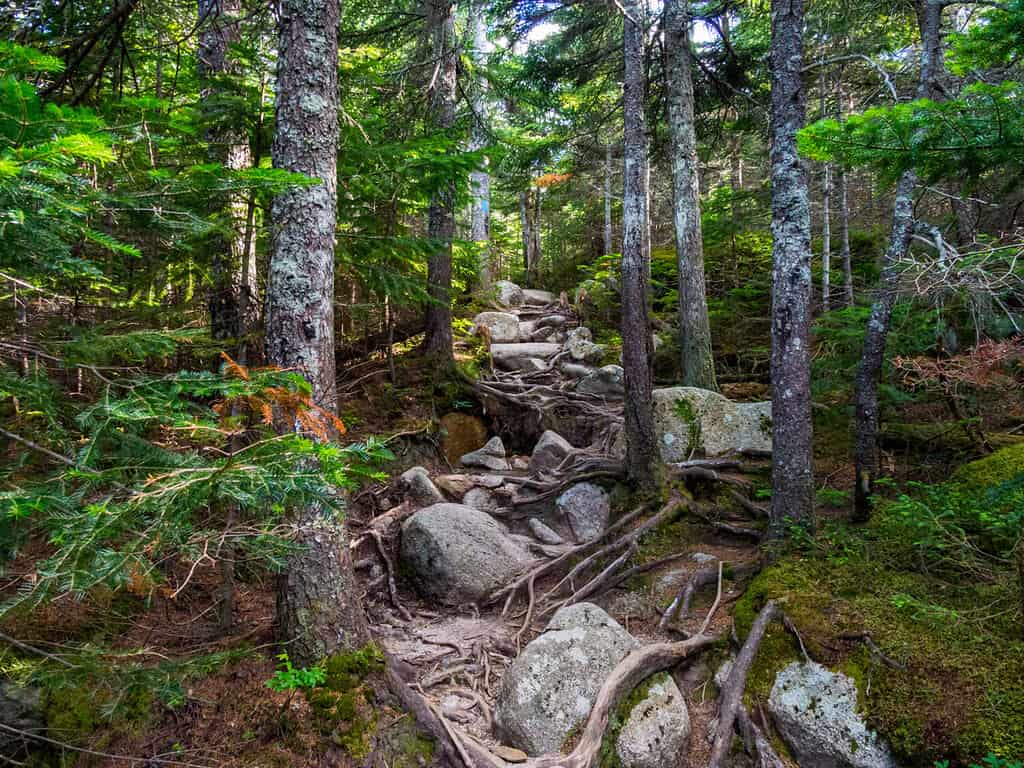
The eastern white pine tree grows throughout the beautiful state of Maine.
©Jonathan A. Mauer/Shutterstock.com
White pine grows in many areas of Maine, but it grows best on rich and well-drained soil. It is a popular species for planting in the state due to its rapid growth, usually adding at least one foot in height each year. The shape of the tree is typically symmetrical and conical, but the white pine weevil can damage the top shoot and cause the tree to have multiple stems and a round shape.
Maine is the Pine Tree State due to the abundance of white pine trees that grow in its forests. These trees have a distinctive pointed top and an often unbranched trunk that can reach up to 100 feet in height and 1-3 feet in diameter. The bark of younger trees is thin and greenish-brown, while the bark of older trees is thicker and very dark. The leaves of these trees grow in clusters of five and are bluish-green with a whitish underside. The cones of the tree are cylindrical and are on a long stalk, maturing over two years and releasing their seeds in late August or early September.
What Do People Do With Maine Pines?
By 1850, most of Maine’s virgin pine had been cut down. The lumber industry in the state peaked in 1909, but white pine is still an important part of its economy. This type of wood is light in color and durable, except if you expose it to moisture for an extended period. It is soft and easy to work with, making it ideal for a wide range of uses. People use the wood for doors, window trim, sashes, furniture, buildings, and boat planks.
Boards of a lower grade are cut into smaller pieces and finger-jointed to create clear wood. Any part of the pine that isn’t good enough for logs is used for pulp, which is then used to make paper and ceiling tiles. Maine’s lumber is sold throughout North America, from Canada to clear into Mexico.
Other Maine State Symbols
Maine nicknamed the Pine Tree State, is renowned for its stunning natural beauty and vast forests filled with towering pine trees. Located in the northeastern United States, this picturesque state offers a diverse landscape of rugged coastline, charming seaside towns, majestic mountains, and pristine lakes. Here are more official state symbols for the Pine Tree State.
The Pine Tree State Animal — Moose
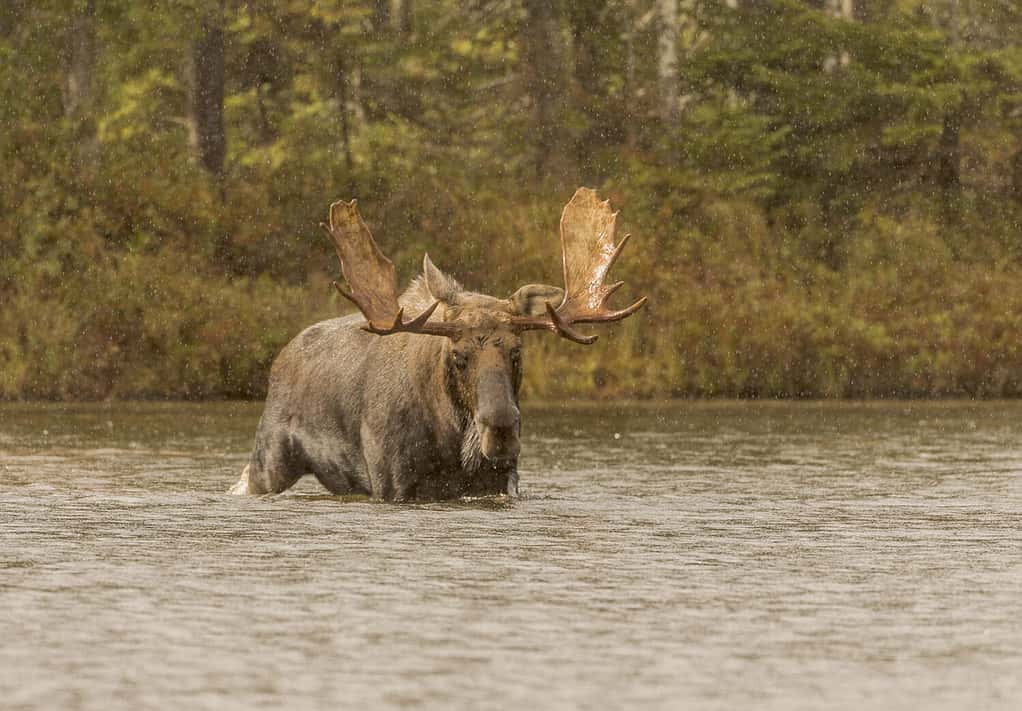
This particular Taiga Moose lives in Baxter State Park in Maine.
©Richard Seeley/Shutterstock.com
Maine is one of the only states in America and the only eastern state with a large moose population. Moose of the Taiga sub-species inhabit Maine. These animals primarily live in the northern region of Maine.
Taiga Moose are large animals, with males weighing up to 1,000 pounds and measuring up to six feet tall at the shoulder. Their fur is typically dark brown or black in color. They have long legs and hooves for wading through deep snowbanks, as well as antlers that can span up to five feet wide in males. Taiga Moose feed on aquatic plants during the summer months and bark from mature trees during the winter months. They are mainly solitary animals, though they can travel in small groups during mating season. Moose spend their days foraging and resting in areas with dense cover, such as thickets of evergreen trees or tall grasses.
Maine State Bird — Chickadee
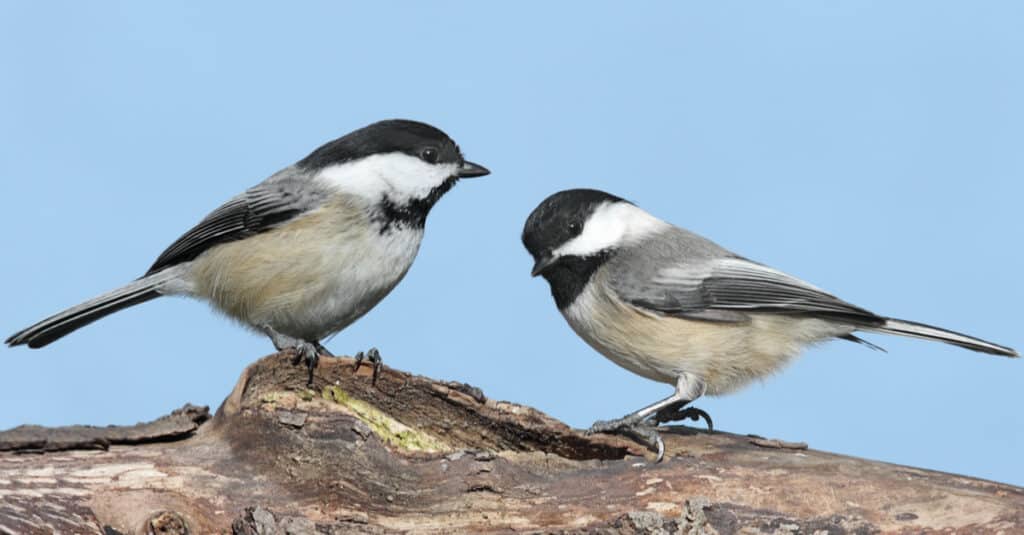
The black-capped
chickadee
is the state bird of the Pine Tree State.
©Steve Byland/Shutterstock.com
The chickadee (Parus atricapillus) is a small passerine bird that makes its home throughout much of North America. It has a distinguishing bib and black hat, as well as gray cheeks and wings. The back and tail are generally brown in color with white bars across them. Its call consists of two notes—a rapid “dee-dee” followed by a slower “dee.” They are omnivorous birds, feeding on insects, seeds, berries, nuts, and even sap from trees during the winter
Chickadees are active year-round and prefer to live in coniferous or mixed woodlands with plenty of trees for shelter. They nest in tree cavities, which they may excavate themselves or use an existing cavity. During the summer months, they often form small flocks that travel together while foraging for food. Scientists call chickadees “helpful” birds. This is because many other species of birds will follow them around and wait until they find a source of food, then quickly move in and snatch it up.
The chickadee is an iconic species for the state of Maine and has been since 1927 when it was officially designated as the official state bird. The Chickadee symbolizes hardiness, resilience, cheerfulness, and adaptability—all qualities that are admired by Mainers. While these birds are common throughout much of North America, they are in particularly high numbers in Maine due to its abundance of natural habitats.
State Cat of Maine — The Maine Coon
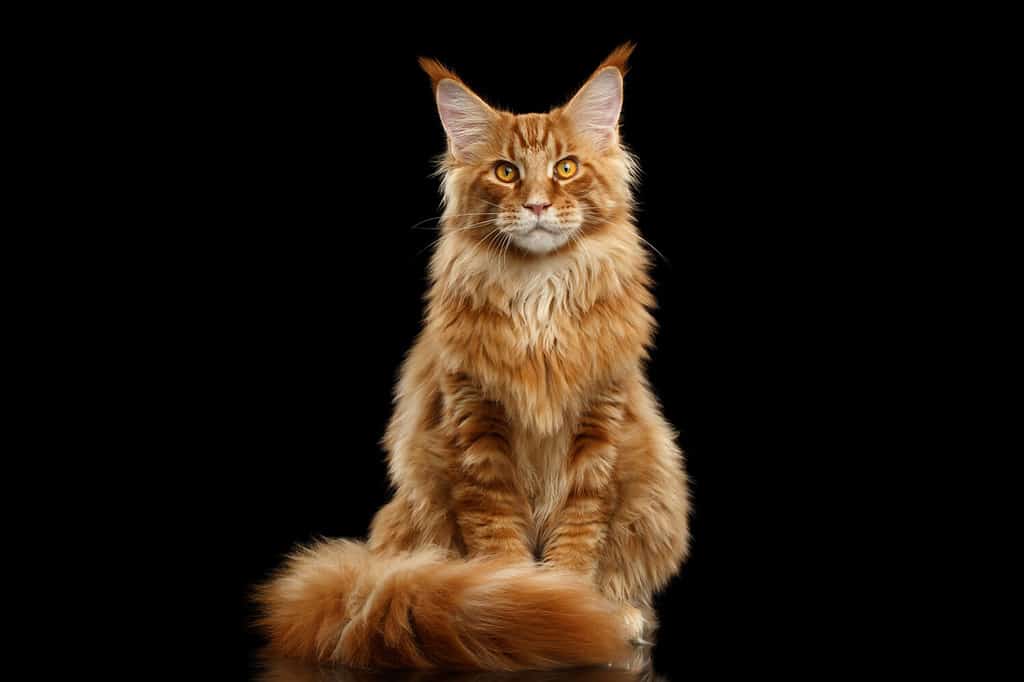
The official cat of the state can survive the winter without hibernating at all.
©Seregraff/Shutterstock.com
Maine Coon cats are native to Maine. Many Coon Cat breeders are of the opinion that this breed was the result of a combination between pre-existing shorthaired domestic cats and longhaired cats from other countries. People theorize that they may have been Angora types brought to New England by sailors or longhairs introduced by the Vikings). For over a hundred years, Maine Coons have been a strong and attractive breed of domesticated cats that were able to endure the difficult New England winters.
Maine Coon cats are a large breed of domestic cat with long fur and a distinctive physical appearance. They have tufted ears, furry tails, and shaggy coats that come in many colors and patterns. They have affectionate personalities and are loyal to their human companions. Maine Coons can be very social animals and often enjoy being around other pets or people. They typically get along well with other cats as well as dogs if introduced at an early age.
These cats are playful and active, often engaging in activities such as chasing toys or playing games with their owners. They have been recognized by the Cat Fancier’s Association since 1895 and are one of only four natural breeds of cats in North America.
The Maine Coon is a beloved breed all over the world and has become an icon of Maine’s culture. The state even adopted it as its official cat breed in 1985! These cats have earned the nickname “Gentle Giants” due to their size and sweet personalities.
Wild Blueberry — Pine Tree State Berry
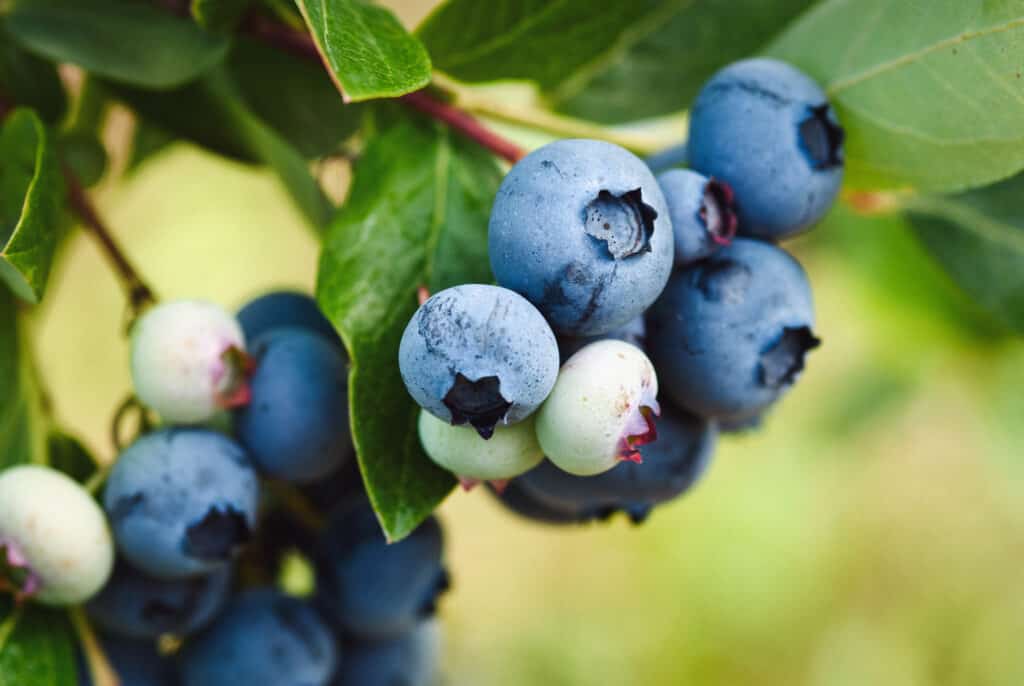
The scientific name for lowbush blueberry is Vaccinium angustifolium.
©iStock.com/Nadya So
Folks often refer to Maine as the Pine Tree State, and one of its most popular fruits is the wild blueberry. Hand-raking is the traditional way to harvest these berries, which usually takes place from July to September. This method involves using a special rake invented over a century ago by a local resident, Abijah Tabbutt. The technique requires a pushing and twisting motion of the wrists in order to pick the berries without crushing them. However, people now use machines more often for harvesting due to the uneven terrain where wild blueberries grow.
Maine residents use wild blueberries for a variety of recipes and uses. From muffins to pies, jams, jellies, syrups, smoothies, and even ice cream—the possibilities are endless! They also freeze the berries for up to six months so that they can enjoy their flavor out of season.
Thank you for reading! Have some feedback for us? Contact the AZ Animals editorial team.

